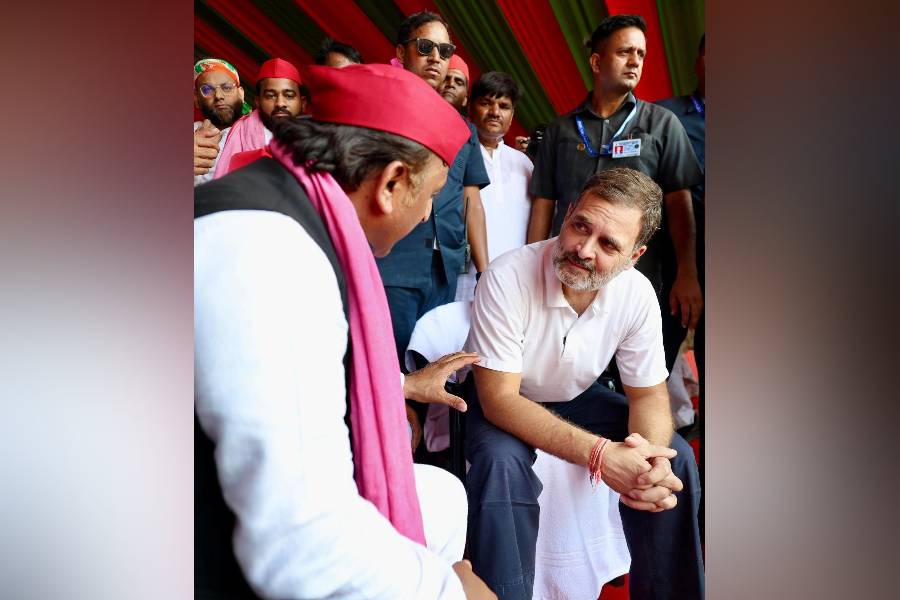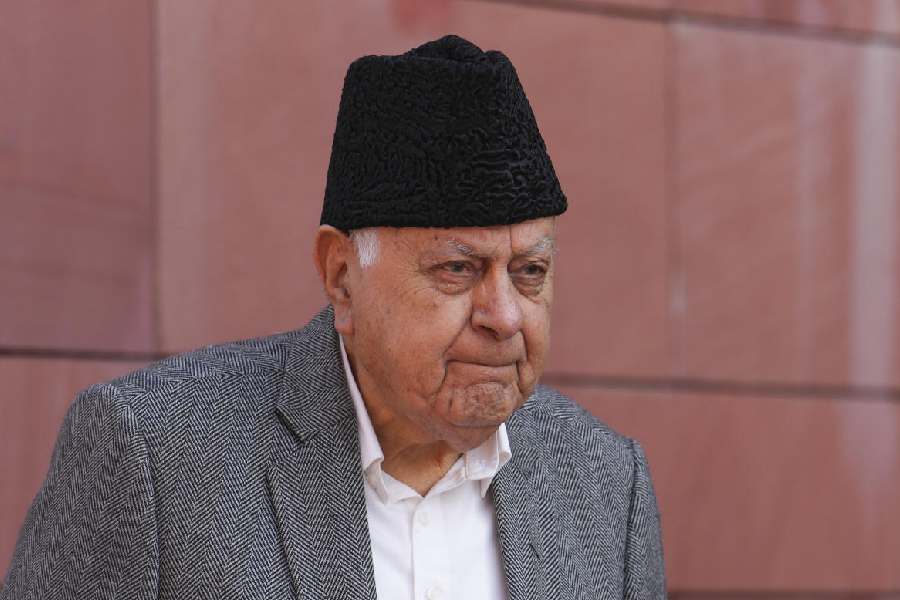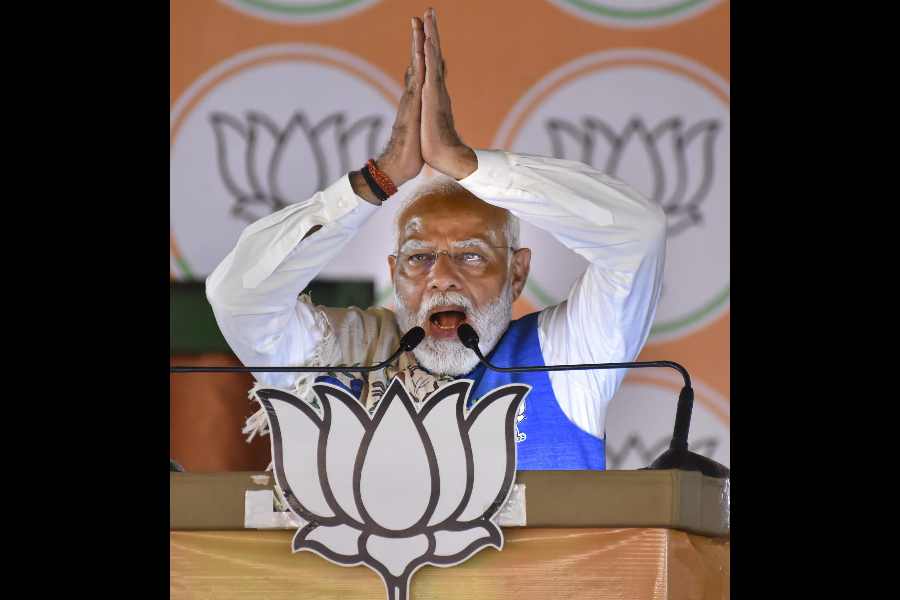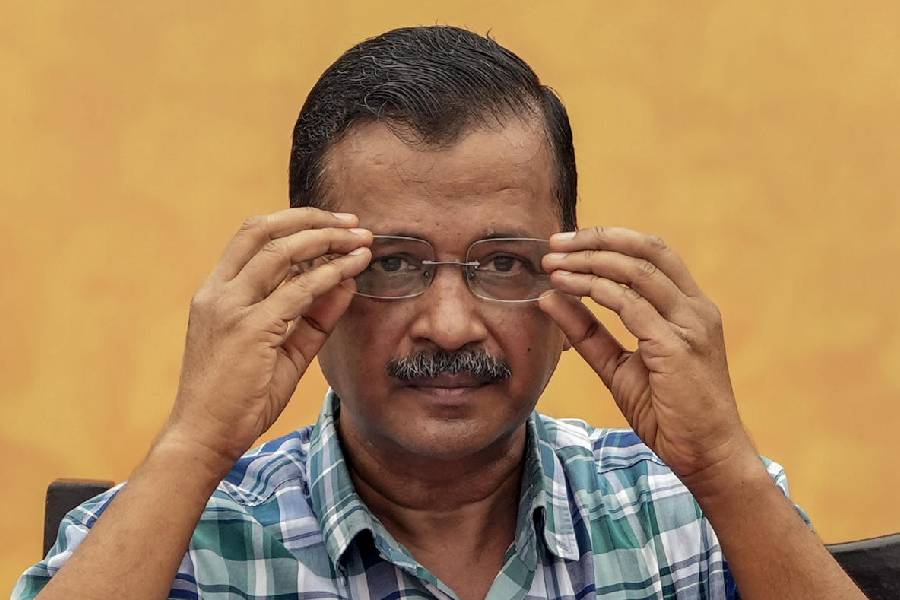If there is one talent that Calcutta should wholeheartedly embrace as its own and be extremely proud of, it’s Mahira Kakkar. Based in New York, Mahira was born and brought up in Kolkata, studying at Modern High School for Girls, La Martiniere for Girls and Jadavpur University and moving on to become the first person of South Asian origin to attend the prestigious Juilliard School’s Drama Division in New York.
Over close to two decades now, Mahira has acted on stage, television and films, with her turn as Rupa Mehra in Mira Nair’s BBC adaptation of Vikram Seth’s A Suitable Boy coming in for special praise. Mahira’s role as Dr Aria Gupta in the smash-hit Netflix show Manifest has made her a global face to reckon with.
Now Mahira, who still calls Kolkata home and comes visiting her city often, has made her Broadway debut, with Life of Pi. The grand musical, based on Yann Martel’s worldwide bestseller which has also spawned an Oscar-winning film, has Mahira playing the role of Pi’s mother. While The New York Times review has described the play as ‘rich and inventive’, Time Out praises it as ‘spectacularly mounted’ while New York Post says that the production arouses ‘sheer emotion and awe’.
Over a lengthy Zoom call peppered with laughs and anecdotes, Mahira chatted with t2oS from the US on her big Broadway debut, the popularity of Manifest, the ground reality for actors of colour in the West and why Kolkata will always be home.
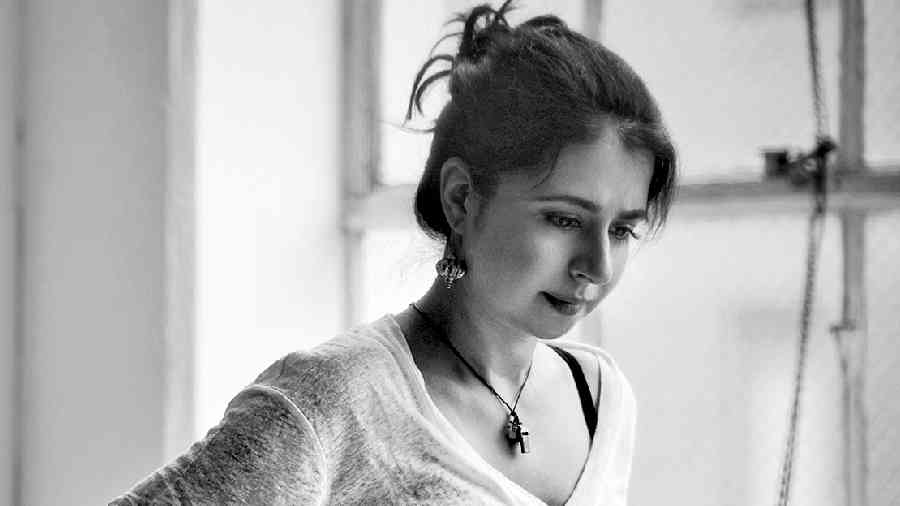
Picture: Nathan Johnson
Congratulations on your big Broadway debut. You had the grand premiere of Life of Pi on March 30. How would you describe the experience?
It was very surreal. A Broadway opening is like nothing else (smiles). It was a big day. People have been very positive. Many leapt to their feet right after the show, which was wonderful. It was a warm house, a house full of friends and maybe they were being very generous (smiles).
The New York Times review is always important, it carries weight. If your show becomes the ‘critics’ pick’, there is a green tick against it. While making our way to the after-party, there were four of us, walking in our heels over 10 blocks and three avenues to the party, and I just said: ‘Look at the New York Times review. Don’t read it... just see if there is a green tick.’ And when someone said there is, I was like, ‘Okay, we are not closing tomorrow!’ (Laughs)

Mahira Kakkar on the red carpet of the opening night of her Broadway show Life of Pi. Picture: Rebecca J. Michelson
How did Life of Pi happen?
I had been asked to audition for it. When I first got the call for the audition, I turned it down because I wanted to stop doing theatre for a bit. Over the last few years, I have worked a lot in theatre and done many off-Broadway shows, some of them back-to-back. I felt I wanted to pivot a little and move on to more on-camera work.
It is with this mindset that I turned down the Life of Pi audition. Theatre takes a lot out of you, it can be very brutal sometimes. As a theatre actor, you put your body on the line every night. Your body starts breaking down eventually. Life of Pi is an immensely physically taxing show. So I kept thinking if I wanted to do it, whether it was sustainable, what the people would be like because if they weren’t nice, I would be stuck in a six-month contract (smiles).
But my manager insisted I read the script and once I did, I fell in love with it. I saw Lolita Chakrabarti’s name on it and for South Asians, Lolita is a huge name in the industry. There are not a lot of people in her generation who have done what she has done. She’s an actor and has now become a writer and her accomplishments, her grace and her courage are hugely inspiring. So I thought: ‘Let me just go in. Let me see what the room is like.’ I walked in and saw Lolita there and I immediately started fangirling. The British producer and director were there, but I forgot they were there... with Lolita around, I completely blocked them out... I was like: ‘This incredible Bengali-British woman is here!’ (Smiles).
And then when I did my audition, I found everyone very open, curious and respectful and I thought, ‘This could be a fun room to work in’. So when they called me back, I said, ‘Yeah, I will do the call-back!’ (Laughs)
How is the stage adaptation different from Yann Martel’s book and Ang Lee’s film?
It is very different and part of that is because it’s a different medium. I don’t want to speak on behalf of the makers, but I would imagine the discussion would have been: ‘How do we make a show that’s purely theatrical?’ The show cannot be a film... it has a lot of theatricality and stagecraft to it that won’t be translated into a film or a book. The stage adaptation has promoted the framing devices to be changed... a lot of the story is narrated by the lead character himself (Pi, played by Hiran Abeysekera).
Also, everything from the book can’t be incorporated into the show... it’s been distilled into its essence. Lolita is very invested in gender parity, so the brother in the original has been changed into a sister here.
What have been the challenges of being part of a play that’s so visceral and of a huge scale?
The director (Max Webster) has gone on record to say that he likes bringing to the stage what others think is impossible. In his younger days, he worked in Nepal and India and is very respectful of our culture, which is very important to me. That’s because it happens often that we (brown actors) can be treated as peripheral characters used for ornamentation... that happens a lot for South Asians in this industry. Stuff like ‘Let’s put you in a sari on the sidelines and that will add some colour’ (smiles). But that’s not at all where he was coming from.
On this show, what has been really exciting is that I am working with actors, puppeteers, dancers... I am working with people who come from movement-based devised plays and those who come from filmy backgrounds.
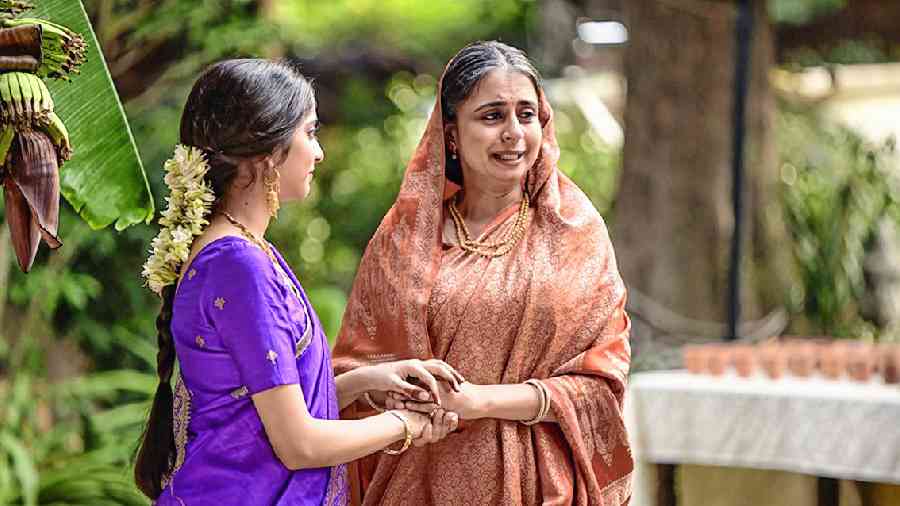
Mahira in Mira Nair’s A Suitable Boy
The composer (Andrew T. Mackay) is British but he also spends a lot of time in Mumbai working with The Bombay Orchestra and in Bollywood. The movement and puppet designer Finn Caldwell has worked with Le Coq in Europe and he brings that experience to our show. The director has also worked in opera. So to be in a room with all these people is exciting. The stage for Life of Pi is inclined, and that’s no joke and it’s hard on the body. We work with life-sized, heavy puppets....
Will there be more theatre work after this or will on-camera work be a priority for you?
It depends on what I get. It’s a privilege to be able to turn down work (smiles). With Life of Pi, I have really been spoilt by the incredible collaborators I have. The thing about Broadway is that you have such a big audience... you get to do it for so many people and that’s such a privilege for an actor.
Were you surprised by how Manifest, in which you have such a pivotal role, blew up in terms of popularity, prompting Netflix to greenlight a final season when NBC had all but cancelled the series?
It did! When I had gone in for it, the showrunner (Jeff Rake) told me: ‘We will have you on for quite a bit.’ It was during the pandemic and it was wonderful to be doing any kind of work then, it was a distraction in a very healthy way. And then when the show started getting popular, I was like: ‘Wow, this is really moving people.’
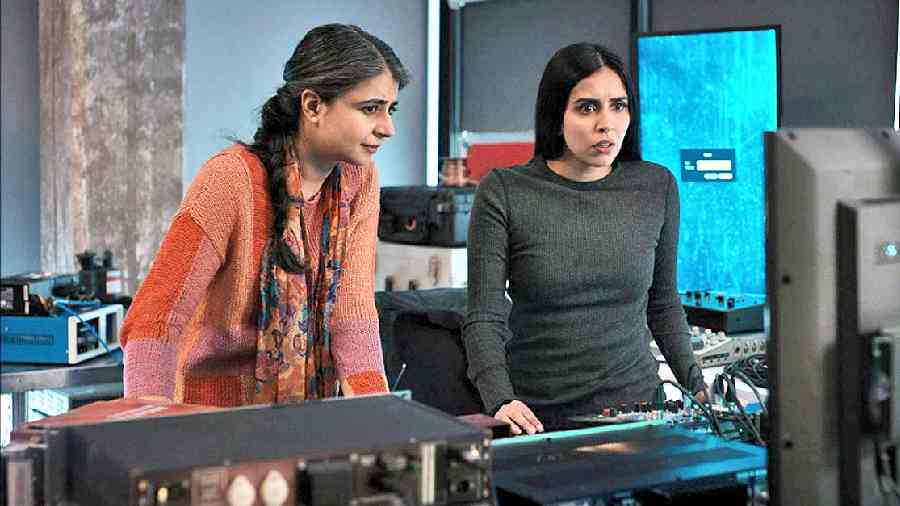
Mahira with Parveen Kaur in the Netflix series Manifest
I think what has worked for Manifest is the intersection between faith, science and procedural drama. It’s such a well written and smartly executed show. I understand why people are drawn to it. But no, I didn’t expect them to react this way.
When I went back to Kolkata last August, I wanted to visit (designer) Sabyasachi’s store because I had heard it’s beautiful. So I went with my mother wearing the clothes I wear every day. The ladies who work at the store recognised me and they were so sweet (smiles). They were like: ‘We recognise you from Manifest!’ And I was like: ‘Oh really?! But I am not wearing a lab coat!’ (Laughs)
Art is for oneself, but it is also for others. It must be a high getting recognised for what you do, and do so well....
Yes. Particularly when children are involved, it’s lovely. There are a lot of children who come to watch Life of Pi. And for many Indian kids or South Asian kids, it feels normalised to see someone like me on stage. Yesterday, my husband’s 82-year-old aunt who is from Tennessee, came to see the show. She had never seen a Broadway show before and she was so moved after watching it. Things like these are very gratifying for an actor.
But then there is also the other side of it. Some of the messages that I have got on Instagram have been pretty crazy! (Laughs) The more recognition you get, the more polarising things can become. While there have been people who have said: ‘We love you and we love your work,’ there have been others who have been like: ‘If we see you on the street, we will slap you! We hate what your character did in Manifest!’ (Laughs) In some ways, it’s also gratifying because then that means that I have been believable on screen!
With so much talk of diversity and avenues opening up for people of colour, what is the ground reality for brown actors across the mediums of film, television and theatre in the US?
In terms of representation, there is more on TV and in films than in theatre. I think it follows the money trail. There is a reason why Diwali has become a state holiday in New York and is being celebrated at The White House. People have woken up to the fact that the South Asian community has money and is willing to spend that money. I don’t think Dior’s fashion show happening in India was about them suddenly wanting to bestow approval on India; it was about them wanting to break into that upper echelon in India which is the moneyed class.
Similarly, TV and film follow the money trail, while theatre moves at a slower pace. Systemic racism still exists. For instance, in some reviews, my name is constantly mixed up because they don’t do research or they don’t know the difference between South Asian names or they haven’t looked at the programme. That sort of stuff, that kind of blind spot is still in place.
The immediate people I am working with are amazing, but outside of that circle, we are still seen as displaceable and replaceable... one brown body substituted with another. The needle is moving slowly because money talks. And when one domino falls, the others also start falling. I don’t mean it in a cynical way... this is the way the industry is.
Being the first South Asian at Juilliard, I sort of got it in the teeth a little bit because I was the first one out of the gate. That school had a reckoning recently and it was all over the news (Juilliard School forced students to take part in a ‘Slavery Saturday’ workshop where they pretended to be slaves while listening to the sounds of chains, whips and the sale of a Black woman for nearly 30 minutes).
People in this country, especially after what happened to George Floyd and after the pandemic, had to wake up and try and address those blind spots. But it’s really hard and it’s slow-moving. For me, it’s interesting navigating all of that (smiles).
What’s the way forward for you?
I just got awarded a NYSCA grant, which is a grant given by the state, for writing. The people I look up to, like Mira Nair and Lolita Chakrabarti, the kind of careers that they have forged in the face of misogyny and patriarchy, their resilience and spirit and their joy... it’s so inspiring. I am trying to lean into that.
I wrote a script that won a Developmental Fellowship and I am trying to create a series of plays for my South Asian colleagues in New York. I am interested in acting more. I love investing myself fully in the work that I do and that’s why I love doing Life of Pi so much. It’s so consuming. I am excited to see what my next project will be. In the next couple of years, I see myself writing and acting and hopefully moving into some sort of a producer space.
Anything in India?
There is some stuff that I am in talks with now. India is where my heart is. That’s where I get my inspiration from. As a child, one wants to leave home and as you grow older, the only thing that you want is to go back home.
When not acting, what do you do to de-stress?
I am from Bengal, and so to de-stress, I read (smiles). I read a lot, I drink a lot of chai! I take a lot of walks. I have many friends who are not in the industry... I call them my ‘civilian’ friends. I spend a lot of time with them. In the middle, I was involved in volunteering. Sharing the good that has been given to me is something that I want to do.
When you were in Kolkata last, what was on your must-visit list?
I was there last August. One of the things I did was meet with my professor Ananda Lal... some of the work that I am doing involves his father’s work. Ananda da took me to see his father’s study which is still preserved. I don’t know if the world fully recognises what a gift P. Lal was and what an incredible mind he was. Visiting his study was a pilgrimage for me. And, of course, my mother puts me to work around the house whenever I am in Kolkata!


